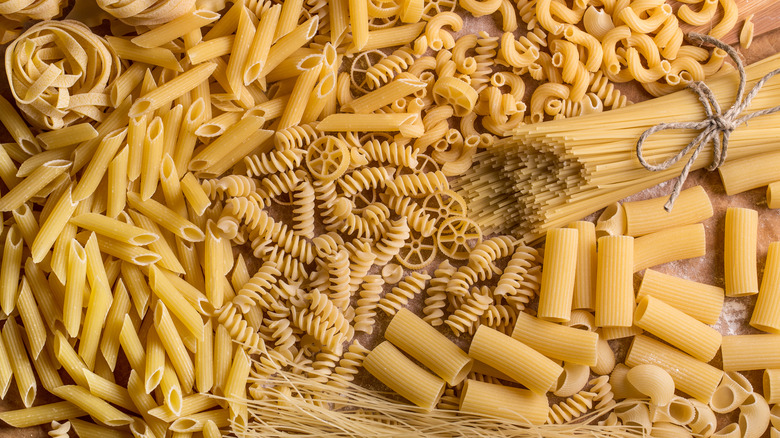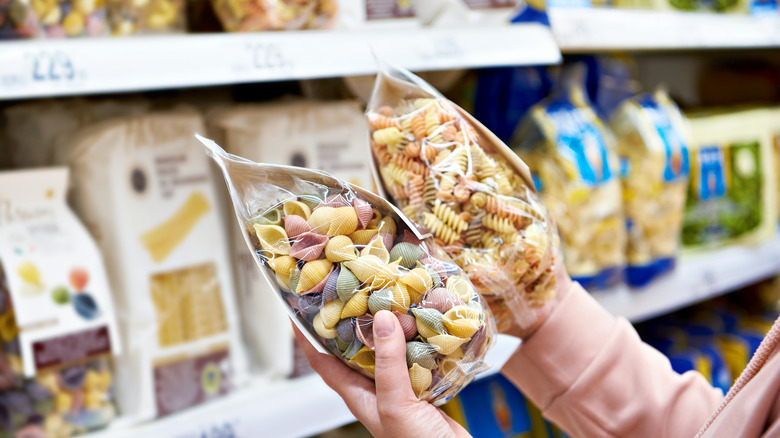Why Some Chefs Recommend Not Splurging On Pantry Pastas
Spaghetti carbonara, linguini with clams, penne with homemade vodka sauce ... yeah, you can turn even the simplest of boxed pastas into a fancy meal. Stop by any grocery store, and you'll find shelves brimming with all types of pasta, each suitable for your next dinner party. Luckily for carb enthusiasts, pantry pastas are as easy to find as they are to make.
And they don't have to break the bank. While a box of Great Value brand penne will set you back around $1 at Walmart, fancier pasta brands can cost up to $10 for little more than 16 ounces. If you're cooking for a large group, that can quickly add up. Granted, sometimes the pasta's price tag indicates its quality. After all, unique pasta shapes — we're looking at you, mafaldine — may not be available in the basic pasta brands. Likewise, the texture of pricier pastas may actually be better than cheaper noodles, and it can be worth spending a few dollars more.
But when it comes to pantry pastas, you don't always — or often — need to splurge. While it's easy to assume that the expensive stuff correlates with improved taste, texture, and quality, there may actually be little difference between the store brand and the artisanal box. So the next time you're shopping for dried, boxed pasta, it's okay to keep things cheap. The reason? Well, pantry pasta ultimately boils down to taste rather than price.
You don't need to splurge on dried pastas
Planning a pasta party? According to writer and chef Lizzie Briskin of Insider, pick up a package of cheap rotini, and your guests likely won't know the difference. That's right. Even if you have a refined pasta palate, it can be fairly difficult to discern the differences between brands of dried pasta, especially when you boil them and douse them in your favorite sauce.
The signature differences between your go-to Barilla and the fancy stuff are the kind of flour and the way the pasta is dried. Sometimes, these differences are noticeable. Cheaper pasta brands tend to embrace quick-drying methods, so cheap pasta dries at a higher temperature than the expensive stuff. This rushed process can result in a lower-quality pasta compared to the costly slow-dried alternatives.
However, if you're not tasting too carefully, you and your guests may not pick up on these subtle differences. Unless you and your friends are pasta connoisseurs, those dollars saved are better spent on some higher-quality guanciale for a Rome-inspired bowl of gricia. Better yet, opt for a quality bottle of wine that pairs perfectly with your go-to shape of Ronzoni.

